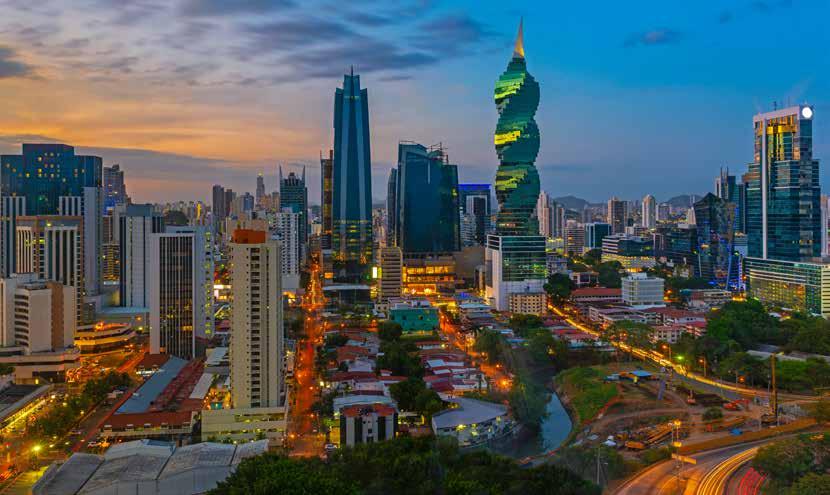
3 minute read
Country Facts



PANAMA
Panama, located at the “heart” of the Americas, is a safe, stable and friendly country of 4 million inhabitants, 75,517 square km and impresses with a stunning natural beauty. Panama possesses seven of the 12 regions which maintain the balance of the main ecosystems of the world. More species of birds live here than in the USA and Canada combined. It is home to seven different indigenous cultures, a “sleeping” volcano, cool mountainous terrains, tropical areas averaging 28 degrees Celsius, a desert and many lakes. From the most luxurious hotels to cabins in isolated islands, indigenous cultures and modern, contemporary arts, extreme sports and cultural tours – there’s almost nothing that can’t be found in Panama. Panama means “abundance of fish and butterflies.” More than 30% of its land is protected by 15 national parks, five forest reservations and 10 wildlife reserves. The country is bordered by the Pacific Ocean and the Atlantic Ocean (Caribbean), with over 500 islands within its boundaries as well as hundreds of rivers all across the territory. It was on Panamanian soil where Spain founded the first city in the New World: Santa Maria la Antigua at Darién. The Panama Canal, along with its spectacular watershed and abundant flora and fauna, is the pride of Panamanians and is greatly admired by visitors. Five areas of Panama have been declared World Heritage Sites by UNESCO.



PANAMA
PANAMA CITY
The capital of the Republic of Panama is the fourth most populous city in Central America. This metropolis has two million inhabitants in its metropolitan area. It is located on the shores of the Gulf of Panama, in the Pacific Ocean, east of the mouth of the Panama Canal. Founded with the name of Our Lady of the Assumption of Panama, on August 15, 1519 by the Spanish Pedro Arias Dávila, the city is the main cultural and economic center of Panama. It is also the country’s financial hub and has a tropical climate. Due to the presence of large international hotel chains and marked American influence in certain areas, it is also known throughout the world by the nickname “The Miami of Central America.”
PEOPLE
This small Central American country between the Atlantic and Pacific Ocean has a population of just under five million. The Panamanians or Panameños in Spanish, are a colorful mixture of indigenous people and Europeans, who mainly settled in the west of the country. In addition, there is a large proportion of Afro-Americans, who descended from former slaves of the Spanish conqueror, as well as various purely indigenous peoples. Most of the migrants come from neighboring Colombia or from China and usually pursue economic interests in Panama.
WEATHER
Panama has a tropical climate. The temperatures throughout the year range between 29 and 32 degrees Celsius during the day and around 23 to 25 degrees Celsius at night. In the higher regions, the temperatures remain lower. Here, night temperatures can drop to 10 degrees or below. Overall, it is a bit cooler in the lowlands on the Pacific side than on the Caribbean coast. The mountain range that runs through Panama divides the country into a rainy and a drier part. The moisture rains down on the Caribbean side with an annual average of around 3,000 millimeters of rain can come together here. Most of the rain falls here during the rainy season, which lasts from April to December. However, the dry season is not really that pronounced. On the Pacific side, there is less than half as much precipitation over the year. Most rain WEATHER falls from September to October, the rain MAY– NOV DEC - APR is transported from south-westerly winds Panama City 23-30°C 21-32°C from the Pacific. A “short dry season” can Bocas del Toro 14-29°C 12-27°C be observed on the south coast in July and August.





